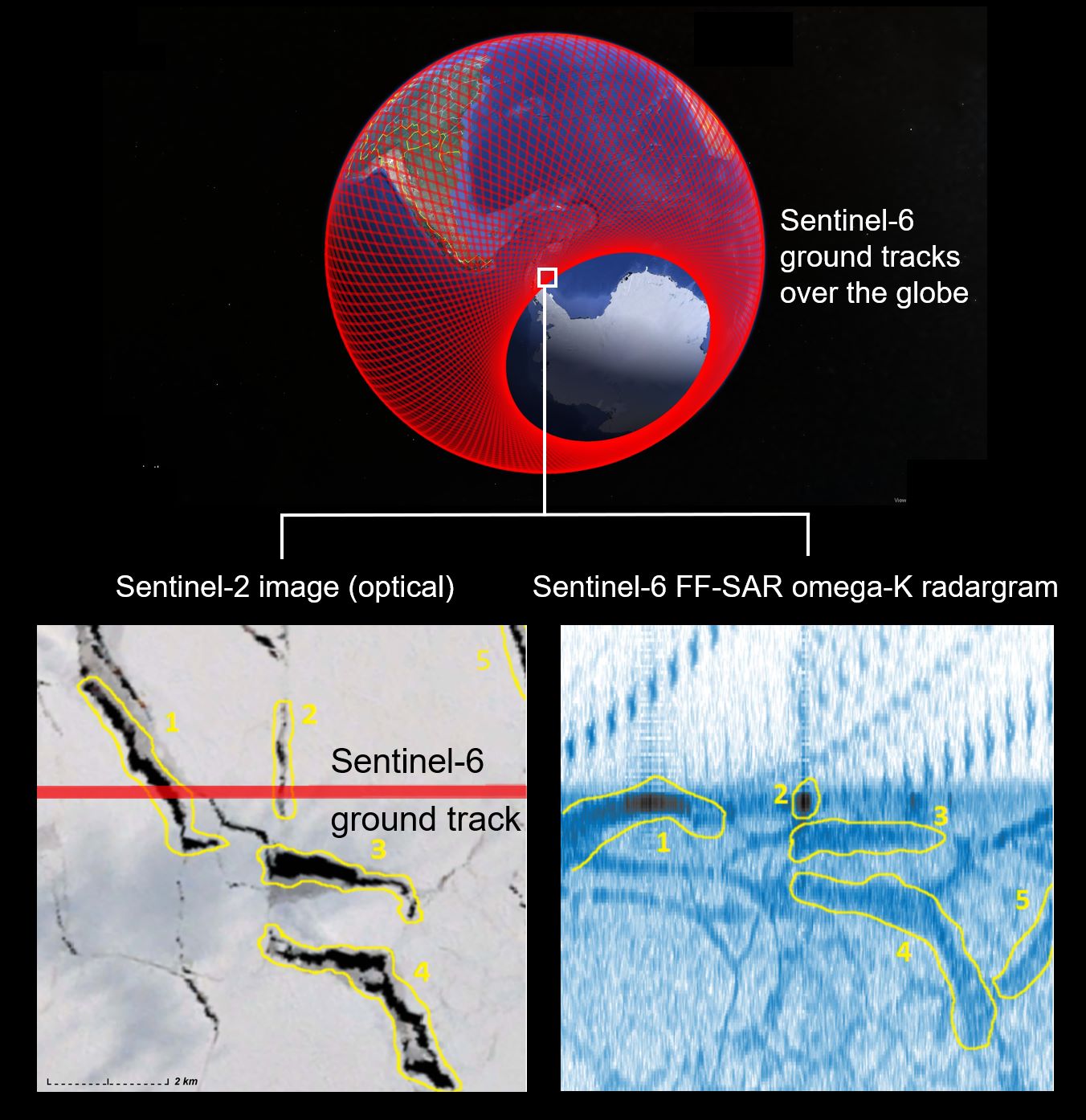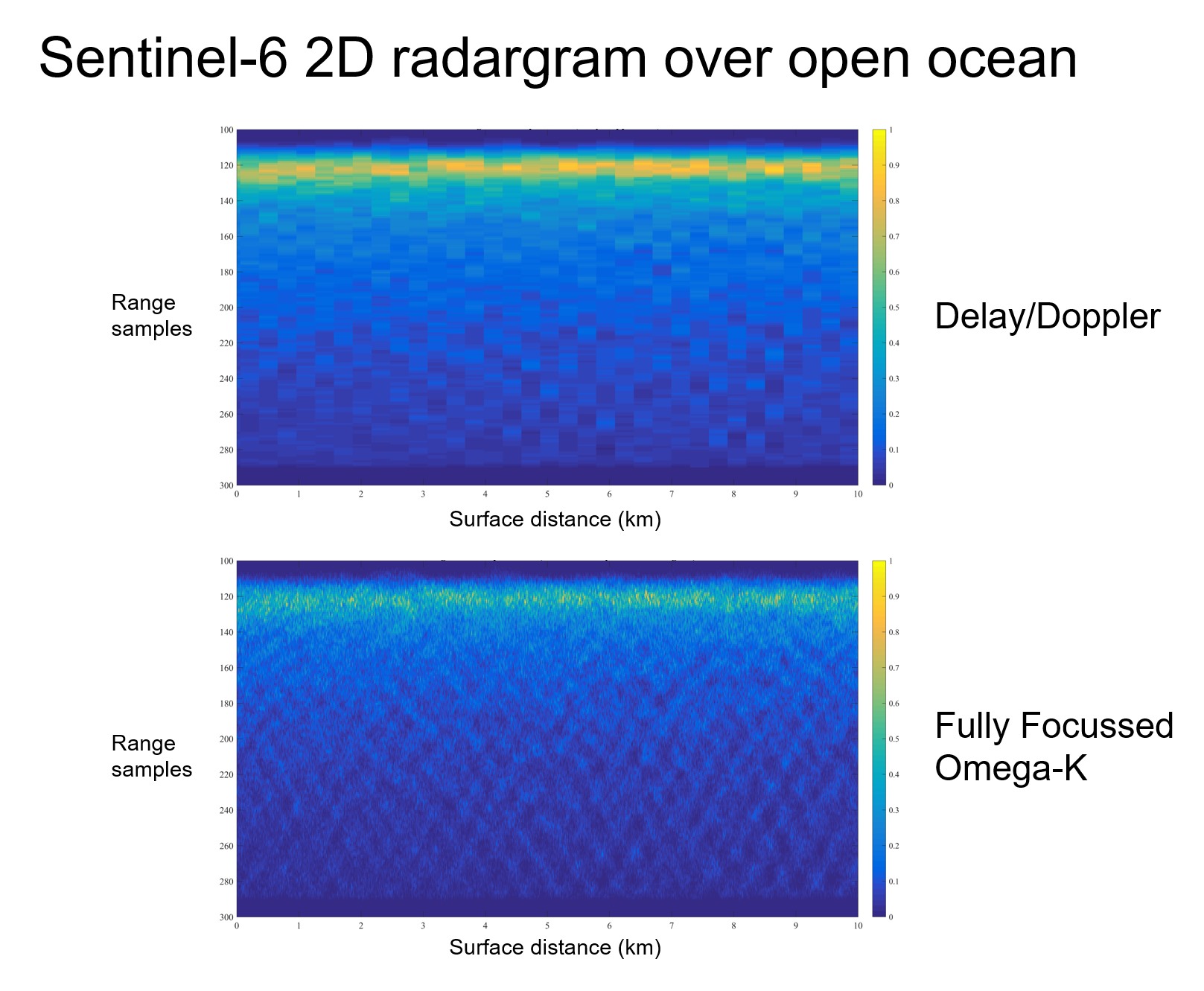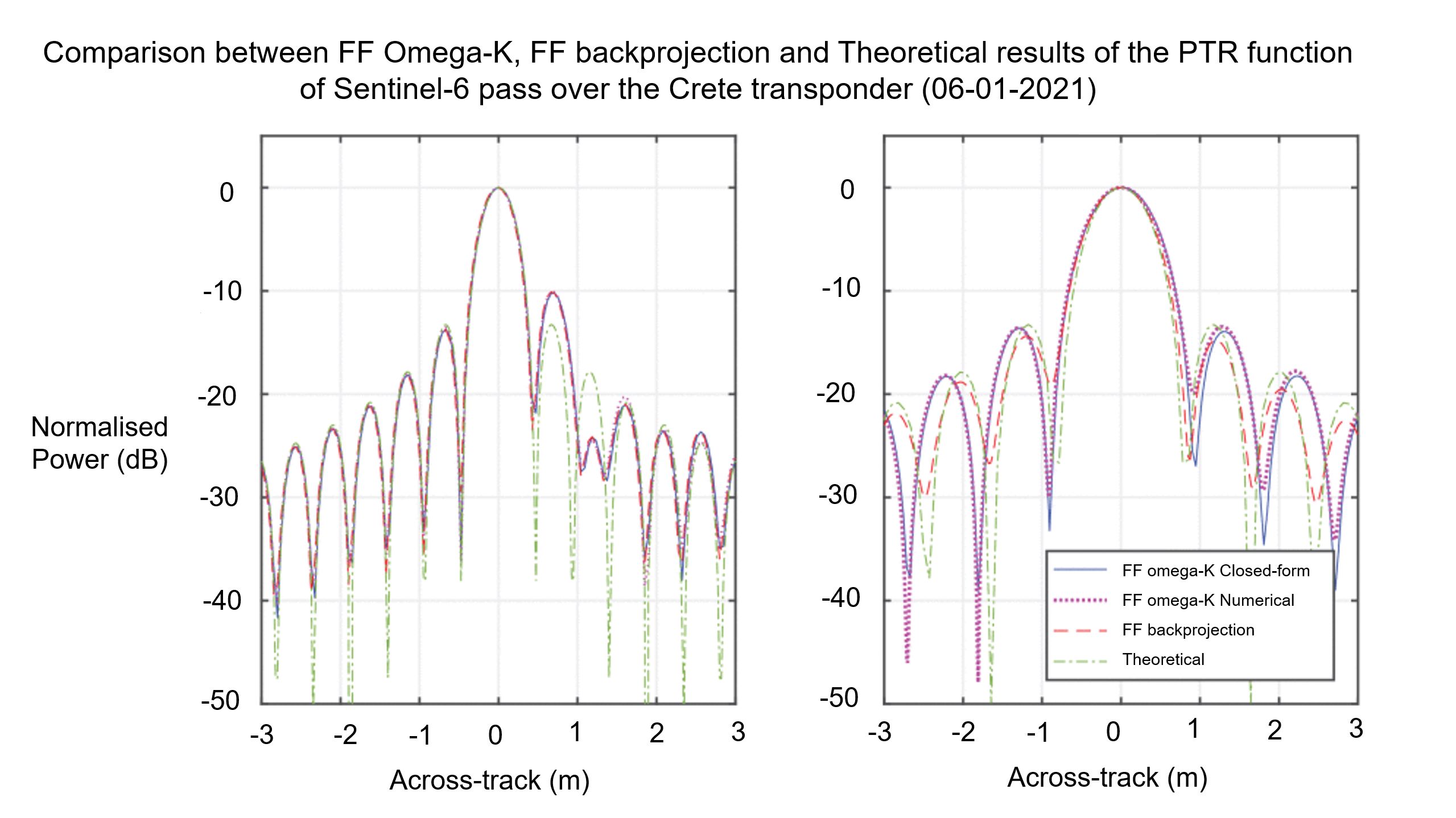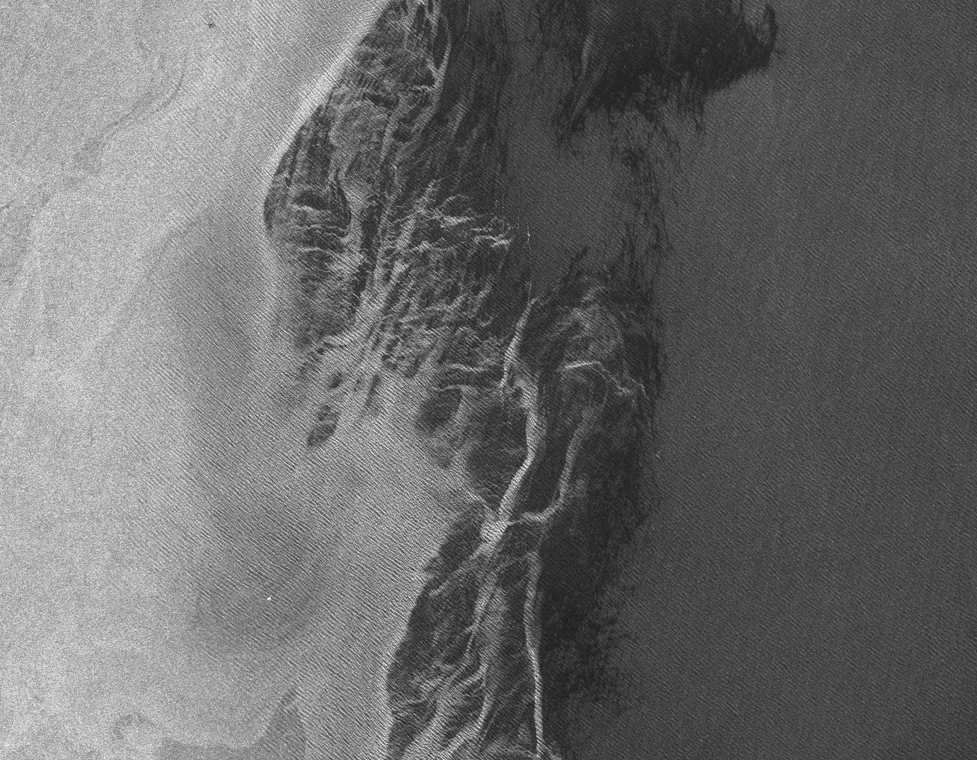Processing very high resolution satellite radar altimetry data can take several hours and requires multiple operations using conventional algorithms. A new FF-SAR omega-K closed-form algorithm developed by isardSAT substantially cuts down the execution time of Sentinel-6 radar altimetry data processing, opening the door to new applications that involve processing vast amounts of data in future and current radar altimeter missions.
 Ice leads in Antarctica seen by an optical image from Sentinel-2 (left) and a radagram from the Sentinel-6 FF-SAR altimeter (right). Many of the leads in the optical image can be recognised in the altimeter radargram. Source: isardSAT & Google Earth.
Ice leads in Antarctica seen by an optical image from Sentinel-2 (left) and a radagram from the Sentinel-6 FF-SAR altimeter (right). Many of the leads in the optical image can be recognised in the altimeter radargram. Source: isardSAT & Google Earth.
New possibilities for FF-SAR data processing
The enhanced computational efficiency of the algorithm, along with its ability to achieve an azimuth resolution of less than a meter, empowers it to produce local and global FF-SAR products for scientific research and operational utilization. This includes products for a better estimation of swell on open ocean, lead and iceberg detection on sea ice, and inland water processing. Projects such as SARWAVE will strongly benefit from the improved speed up capabilities of the isardSAT Sentinel-6 Omega-K FF-SAR processor. Furthermore, the almost real-time processing capability within a single CPU core opens the path for future in-flight real time processing of radar altimetry data.
 Comparison between Sentinel-6 Delay/Doppler and Fully Focussed Omega K 2D radagrams over open ocean. Ocean waves can be identified in the radagram processed with WK closed-form algorithm. Source: isardSAT
Comparison between Sentinel-6 Delay/Doppler and Fully Focussed Omega K 2D radagrams over open ocean. Ocean waves can be identified in the radagram processed with WK closed-form algorithm. Source: isardSAT
Simplifying altimetry data processing
This new omega-K based algorithm reduces more than half of the number of operations required for Sentinel-6 altimetry data parameters, shrinking processing time from hours to seconds. For instance, during a processed time of 2 seconds for Sentinel-6 parameters (18,000 echoes of 256 range samples), while FF-SAR backprojection algorithm requires approximately 216,000 operations, the numerical omega-K algorithm requires 922 operations – and only 74 operations are required for the new closed-form method.
 Source: isardSAT
Source: isardSAT
Another example shows that, while the range zero-padding execution time for the backprojection algorithm is 1h 32 minutes, it is only of a 1.54 seconds for the closed-form omega-K processor. The algorithm has undergone a full validation process over point targets, including simulated and real data from transponders and a corner reflector.
